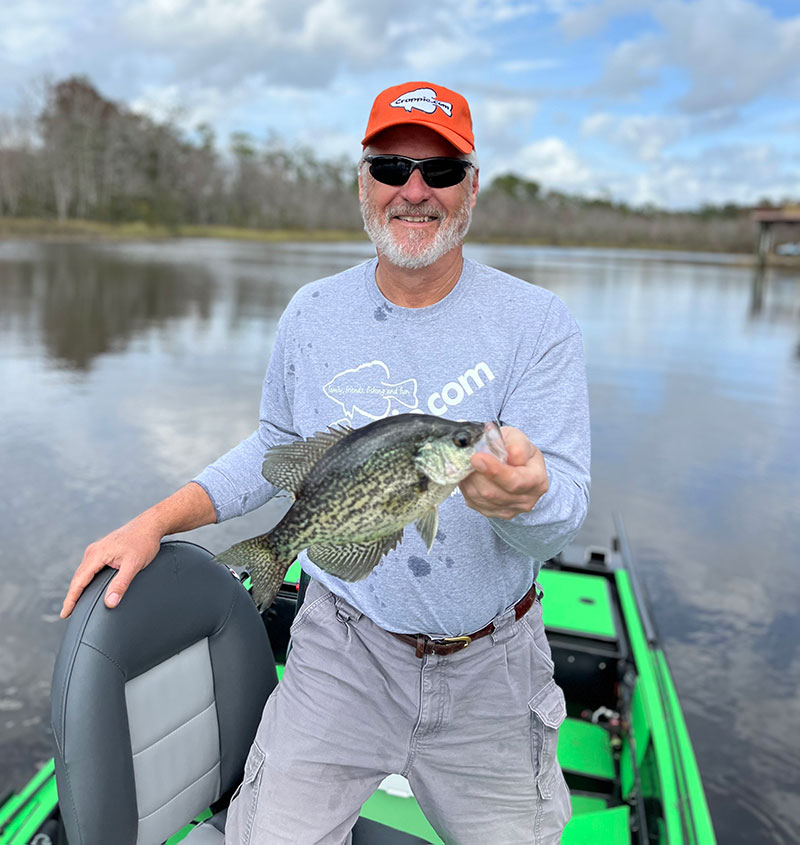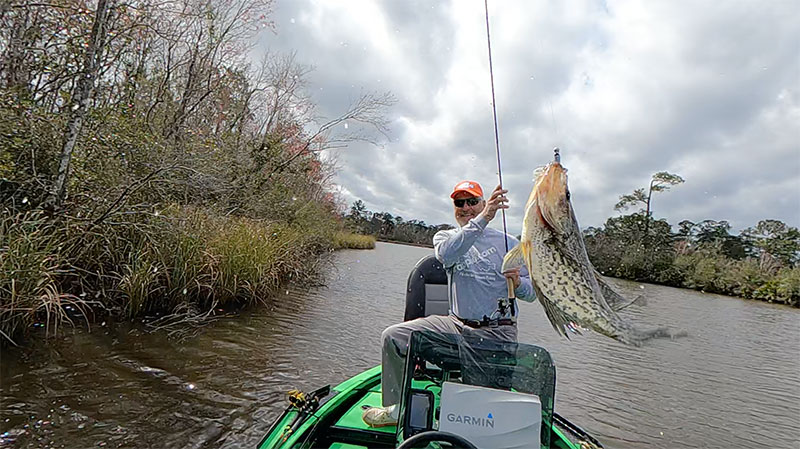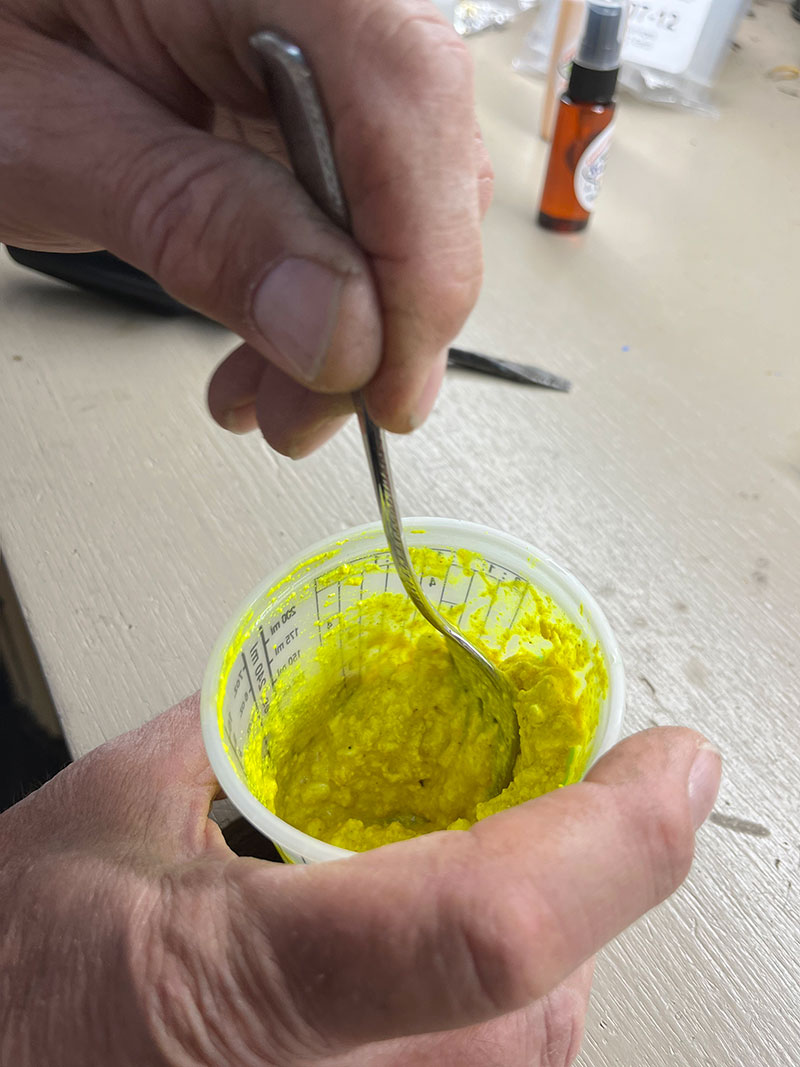 Pearl River angler John Guillot uses mixture he developed on spring sac-a-lait
Pearl River angler John Guillot uses mixture he developed on spring sac-a-lait
It’s no secret that sac-a-lait anglers hold their cards close to the vest when it comes to sharing information.
So when I made a fishing trip to the East Pearl River with John Guillot, of Kiln, Miss. I wasn’t sure what to expect.
Would I be blindfolded on the way to his first spot? Should I bring a full notebook or just a notecard to record information about the trip? Would he be averse to me snapping a few photos of his spots?
My worries were quickly put to rest on the ride to the boat launch as Guillot went into detail about a scent injection that he started using that has improved his catch ratio significantly over the last year.
Will this work?
Guillot fishes the Pearl River Delta which contains the East, Middle, and West Pearl Rivers on the Louisiana-Mississippi border and said this year he is on pace to break last year’s total of 2,500 fish. He owes it all to a mixture that he started perfecting that originated from his boat shop in his backyard.

“One day I was mixing up some epoxy to load into a syringe in order to fill voids in a customer’s transom,” he said. “Then the thought came to me, ‘Is the syringe strong enough to inject a scent into a hollow-bodied tube jig?”
The native New Orleanian started researching fish attractant for crappie and tried injecting the tube jigs with various scents.
“The attractants worked, but I found that the liquid didn’t stay inside the lure for long,” he said. Guillot then had another idea. If he could somehow make the attractant thicker, that would allow it to remain lodged inside the tube jig longer.
“I took an old bottle of Crappie Nibbles, mixed them with worm oil to help soften them, then mixed that with my favorite attractant —Crappie.com Slab Sauce,” he said.
The end result was a mixture with a dough-like consistency that was thin enough to flow through an epoxy syringe, but thick enough to remain inside the tube jig for numerous casts. This also eliminates the nuisance of perch stealing the Nibbles.
When preparing his sauce, Guillot starts with a container of Crappie Nibbles.
“Any one is fine,” he said. “I bought a bunch when a store by my house dumped their inventory at 25 cents a jar, I just couldn’t pass on that deal.”
No lumps

In a cup, he adds a tablespoon of worm oil and begins working the oil in with a fork. Then he crushes the ingredients in the cup, adding the Slab Sauce and smashing everything until it becomes a smooth, thick, pasty consistency without any lumps.
“You don’t want any lumps in it because you won’t be able to push it out of the syringe tip,” Guillot said.
When the sauce is ready, he fills 5-6 syringes halfway with the attractant, puts them in a zip-lock bag, and slides them into a compartment in his tackle box. When he’s ready to use the solution, he simply pulls a syringe out of his tackle box and sets it on the bow of his boat to use while fishing.
“The stuff’s amazing!” he said. “I can catch a bunch fish before having to refill the body.”
I had the opportunity to try out the “sauce” at our first stop. It was a non-flowing bayou just off the East Pearl north of Hwy 90. Guillot lowered the trolling motor and proceeded to scan his electronics for a lay-down in 20 feet of water, which he marked on a previous trip. After locating it, he took out the syringe, filled his jig and tossed it over to me. I filled my tube jig.
We both were using simple generic chartreuse tube jigs with a black body and a chartreuse skirt. We were using the bold black color because the water was murkier than normal as the Pearl was still recovering from flood levels in March.
Right there!

Guillot glanced at his Panoptix screen, pointing to a spot on the water’s surface and said, “Right there!” I lowered my jig down slowly and when the top of my rod came to the water I held the rod still and felt a thump more associated with a speckled trout than a crappie. I pulled up quickly and landed a solid 13-inch slab. We ended up catching 15 sac-a-lait off of that one rootball and the one thing I noticed was that these fish were swallowing the jig like I’ve never seen before; I had to use a needle-nose piers to remove the hooks out of three of the fish I caught.
We tried numerous other spots and picked up sac-a-lait all along the Bayou, and by the end of the day we ended up with over 30 sac-a-lait. Guillot pointed out an interesting detail that I never realized all day. As he took each sac-a-lait out of the livewell and placed them in my ice chest, he got to the last one and said, “30 crappie and nooooo bluegill!” I never noticed but looking back throughout the day, we didn’t catch any bluegill!
“When I used to use Crappie Nibbles on my hook those bluegill would peck away at it,” he said. “With the injection, most of those bluegill don’t even bother trying messing with the jig.”
Guillot said the mixture can be used year-round and will especially help during the summer months when fish become finicky and harder to catch. Also it’s a great fit for the East Pearl because the sac-a-lait can always use some extra help with finding lures in the murky water. Guillot said the Pearl is shaping up quite nicely for a fantastic spring and anglers can expect a better than average production barring any heavy storms to the north.


